By Dick Winters
Now that Uden was secured, Easy Company and the remainder of the 101st Airborne Division received orders to move to the “Island,” a long narrow area north of Nijmegen between the Lower Rhine and the Waal Rivers. The ground between the dikes of the two rivers was flat farm land, spotted with small villages and towns. The dikes along the rivers were twenty feet high and the fields were criss-crossed with drainage ditches that were covered with heavy vegetation. There were roads on the top of the dikes and narrow roadways through the adjoining farm land. The farming was concentrated and lush with fields of carrots, beets, and cabbages, interspersed with fruit orchards.
For the upcoming operation the 101st Airborne Division was attached to the British XII Corps. On October 2, the 506th PIR moved by trucks over the bridge at Nijmegen and was the first unit of the 101st to move to the Island. Intelligence reported that the German 363d Volksgrenadier Division was in the vicinity and received orders to clear the Island. The 363d Volksgrenadier Division had been cut up in Normandy, but now had been reinforced and was anxious to return to battle.
We Establish Our Positions
The following day our regiment relieved the frontline positions held by the British 43d Wessex Infantry Division, which was covering a line of approximately six miles in length. The 43d Division had suffered heavy casualties in their attempt to seize the crossings of the Lower Rhine and to evacuate the British 1st Airborne Division that had jumped at Arnhem. As we approached the forward positions, the British Tommies were withdrawing in trucks. Taking a good look at them, I had never seen more thoroughly dispirited soldiers. Two weeks of combat had totally drained their morale and had thoroughly demoralized the troops.
Colonel Strayer’s 2d Battalion now dispersed its line on the south bank of the Rhine, covering an area of over three miles in length, starting at a point one-half mile east of Heteren and extending two and one half miles west of Randwijk toward Opheusden. The 3d Battalion lay on our right flank with 1st Battalion in reserve. Easy Company held the right of the battalion line, with Dog Company on the left flank, and Fox Company in reserve. Colonel Strayer established battalion headquarters at Hemmen, a village just to the rear of our front lines.
Each company had responsibility to cover one and one half miles of front, far in excess of the normal distance for company defensive positions. The line could only be covered by strategically placing outposts at the most likely avenues of enemy approach and where I calculated enemy infiltration would occur. Company headquarters would keep contact with these outposts by means of radio, wire, and contact patrols. I placed the second and third platoons on line and kept my first platoon in reserve. Easy Company’s entire complement of personnel consisted of five officers and 130 enlisted men present for duty.
There was little action the first two days but around 0400 on October 5, the enemy attacked in strength with machine gun and mortar support on our flank, striking 3d Battalion headquarters and killing the battalion commander.
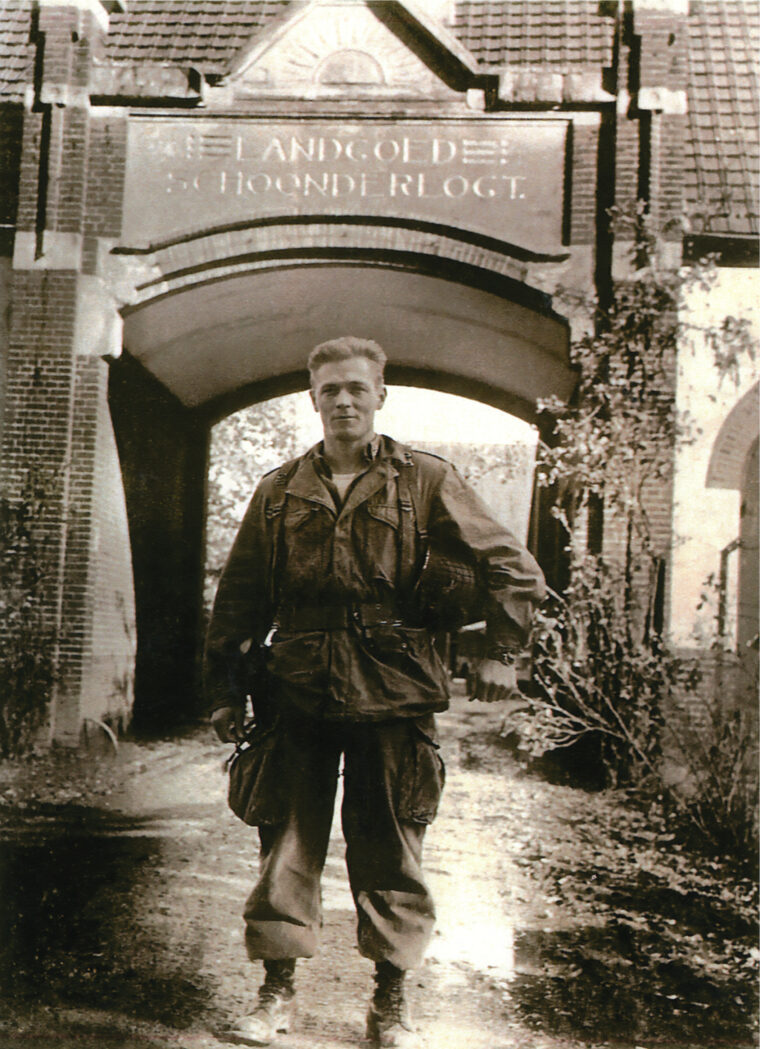
We Engage the Enemy; I Investigate
Simultaneously on our front, a patrol of four men led by Sergeant Art Youman left Randwijk to observe enemy activity and to adjust artillery fire from an outpost on the south bank of the Rhine River. The patrol included Youman and Privates First Class Roderick Strohl, Jim Alley, and Joe Lesniewski. The patrol returned at 0420 with all four wounded by small-arms fire and hand grenades. Alley had caught the worst of it. He had thirty-two holes in his left side, face, neck, and arm and would spend the next two months in the hospital. Everyone in the patrol was out of breath. One look at them and you knew that they had been in combat and had faced death in the night. There was absolutely no question about it. Strohl reported that they had encountered a large body of Germans at the crossroads three quarters of a mile east of Easy Company’s command post. In his estimation, the Germans had achieved a major breakthrough of our lines. Strohl also reported that the enemy had a machine gun that was firing randomly to the south. As they had approached the machine gun, his patrol had come under fire.
Due to the potential seriousness of the situation, I decided to investigate myself. Taking Sergeant Leo Boyle from the company headquarters (he carried the SCR 300 radio), and one squad from 1st Platoon, which at this time was still the reserve platoon, I organized the patrol and started off as fast as possible to analyze the situation. As we approached the crossroads, I could see and hear intermittent machine gun fire, with tracers flying off toward the south. This firing made no sense to me because I knew there was absolutely nothing down that road for nearly three and a half miles—and that would be the 2d Battalion headquarters at Hemmen.
At this point I halted the patrol and tried to make contact with the Canadian soldier who was our forward observer for artillery support. I wanted the observer to place a concentration of artillery fire on that crossroads, but I could not raise him on the radio. Leaving the patrol in charge of Sergeant Boyle, I conducted a short reconnaissance myself to determine which was the best way to get closer to that crossroads. I saw that the river side of the dike had a ditch about two-to two-and-a-half-feet deep that ran parallel to the dike road. This would provide us better cover. Leaving two men as guards for our rear and right flank protection, I took the remainder of the squad up and over the dike to the north side. We then followed the ditch toward the crossroads and the machine gun. Approximately 250 yards from the crossroads, I again halted the patrol and crawled up the ditch by myself to scout out the situation. As I got closer to the crossroads, I heard voices and then I observed seven enemy soldiers silhouetted against the night sky, standing on top of the dike by the machine gun. They were wearing long winter overcoats and distinctive helmets. I crawled until I was about twenty-five yards behind them in the drainage ditch at the bottom of the dike. I thought to myself, “This is just like the movie ‘All Quiet on the Western Front.’”
We Attack the Machine Gun Nest
I returned to the patrol and informed them of the enemy dispositions. The instructions were clear: “We must crawl up there with absolutely no noise, keep low, and we must hurry.” I could see that we would not have the cover of night with us much longer. We reached a position about forty yards from the machine gun as dawn approached. I halted the patrol and instructed Sergeant Dukeman and Corporal Christenson to set up our machine gun. I then went to each man and in a whisper assigned each a target on the German machine gun crew with instructions to fire on my command. Next I stepped back and raising my voice a bit louder, said, “Ready, Aim, Fire!” The rifle fire was good, but our machine gun fired a bit high. Three Germans started running for the other side of the dike. I joined in with my M-1, as did everybody else. In short order we accounted for all seven enemy soldiers.
No sooner had we eliminated the German gun crew than we started receiving some light rifle fire from the east side of the roadway that ran from the dike to the river. I immediately withdrew the patrol down the same ditch by which we had approached the crossroads for about 200 yards to another drainage ditch that ran parallel to the roadway from which we were receiving the rifle fire. I had one major problem because the Germans on the other side of that roadway were at least combat patrol size and I only had one rifle squad at my disposal. I radioed Lieutenant Harry Welsh at the company CP to send up the balance of 1st Platoon and also 1st Lieutenant Frank Reis from the battalion headquarters company with his section of light machine guns. At this time we received some rifle grenade fire from the direction of a culvert that ran under the road to the river. Without any direction, the men immediately returned that fire and destroyed the German position. In the ensuing exchange, we lost Sergeant William H. Dukeman, a man we all respected. “Duke” was a Toccoa man who was beloved by everyone in the company.
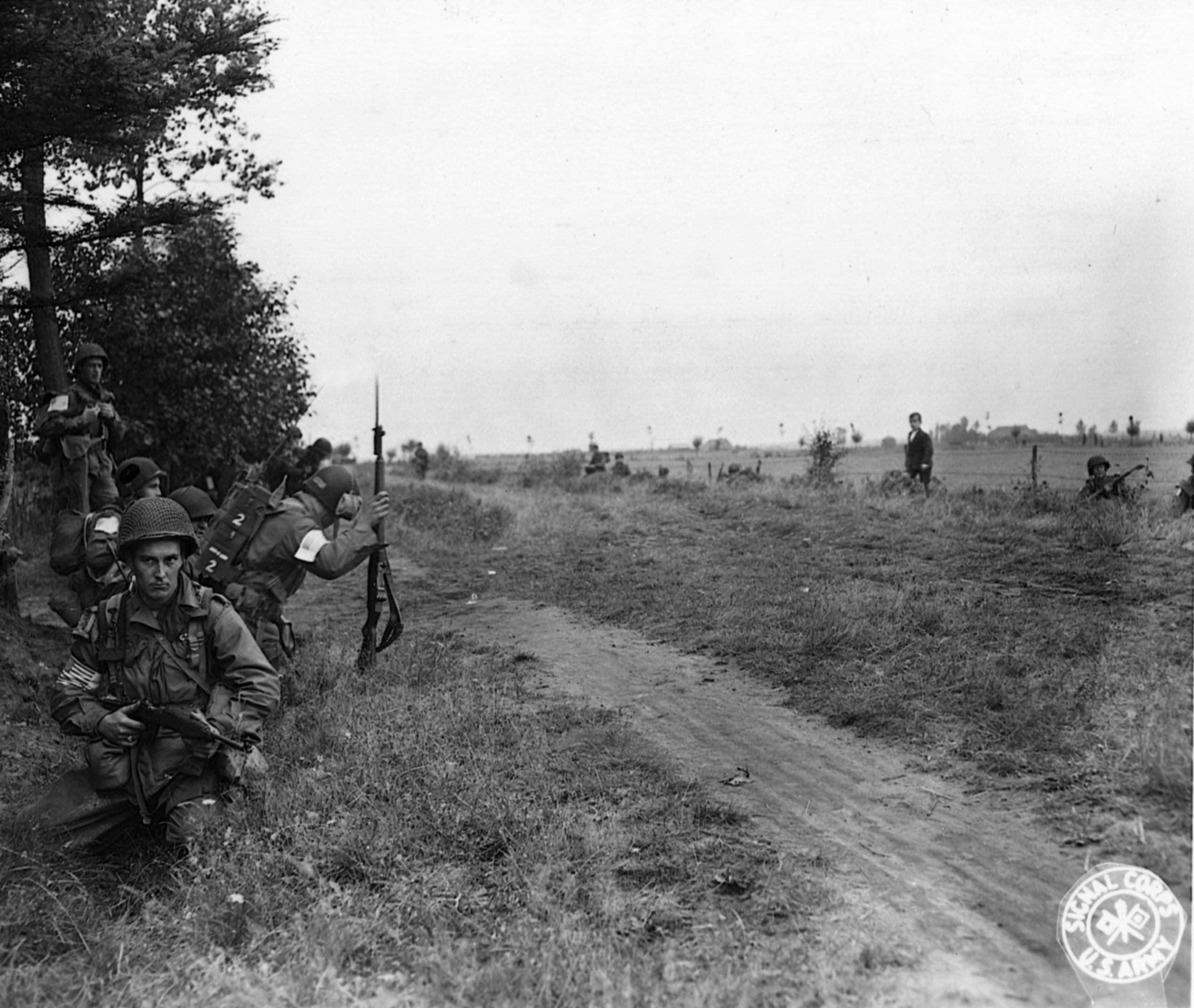
With No Cover, I Decide to Attack
While waiting for the rest of the platoon to join us, I went out fifty yards into the field between the two lines to contemplate the situation we were facing. After careful reflection, three things were immediately apparent: first, the Germans were behind a good solid roadway embankment. We were in a shallow ditch, with no safe route for withdrawal. Second, the Germans were in a good position to outflank us to our right and catch us in this open flat field with no cover. Lastly, if the Germans had a force of any size, they could advance right down that roadway south and there would be nothing to stop them until they hit the battalion command post. Determining that we could not stay where we were and refusing to retreat, I decided to attack. To surrender the initiative to the enemy was indefensible. I figured that when you are in a face-off, the guy who gets off the first shot usually wins. There was really no other decision to make than to take the battle directly to the enemy. I asked God to give me strength.
By the time the balance of the 1st Platoon arrived, full daylight reached our position. I called Lieutenants Reis and Peacock, the latter being the leader of 1st Platoon, and Staff Sergeant Floyd Talbert together and gave them the following orders: “Talbert, take 3d Squad to the right. Peacock, take the left with 1st Squad, and I’ll take 2d Squad right up the middle. Reis, I want your machine guns placed between the columns and I want good covering fire until we reach that roadway. Then, lift your fire and move up and join us. Fix bayonets and get in line as quickly as possible. Peacock, when everybody is in position, I’ll give you a hand signal and you drop a smoke grenade to signal our jump-off.”
I then assembled the second squad and explained the plan. Don Hoobler was standing right in front of me. When I said, “Fix bayonets,” he took a big swallow. I can still remember seeing his Adam’s apple make a difficult trip up and down his throat. Hoobler’s adrenalin was flowing.
My adrenalin was pumping too. I had never been so pumped up in my life. On the smoke signal, the base of fire commenced and all three columns started their dash across the 175 to 200 yards of level field. I was a good athlete in school, but I am sure that I ran the 200 yards faster than I had ever run 200 yards in my life. Hidden in the grass were strings of barbed wire, about the height of the tops of our shoes. I tripped once or twice but continued running. Oddly enough, I seemed to be floating more than running as I rapidly outpaced everyone else in the platoon. When I reached the road leading to the dike, I was completely alone, oblivious to where the rest of the men were located.
I End Up in a Company of German Paratroopers
The roadway from the dike tapered from being twenty feet high at the dike to a level of about three feet in front of me. I simply took a running jump onto the roadway. Good God! Right in front of me was a sentry on outpost, who still had his head down, ducking the covering fire from Lieutenant Reis. To my right was a solid mass of infantry, all packed together, lying down at the juncture of the dike and the road, on which I was standing and which led to the river. They, too, still had their heads down to duck under that base of fire. Since it was already cold in October, the enemy were all wearing their long winter overcoats and had their backpacks on, all of which hindered their movement. Every single man was facing the dike and I was in their rear. I realized what the size of a company formation of paratroopers looked like and I knew this was much larger than one of our companies. Other than a lone sentry, who was directly in front of me, the rear of this mass of men was about fifteen yards away and the front of the company was no more than an additional fifty yards from my position.
I wheeled and dropped back to my side of the road, pulled the pin of a hand grenade, and tossed it over. At the same time, the German sentry lobbed a potato masher back to me. As soon as I threw the grenade, I realized that I had goofed. I had kept a band of tape around the handle of my grenades to avoid an accident in case the pin was pulled accidentally. Fortunately, the enemy’s grenade also failed to explode. I immediately jumped back up on top of the road. The sentry was still hunched down covering his head with his arms waiting for my grenade to explode. He was only three or four yards away. After all these years, I can still see him smiling at me as I stood on top of the dike. It wasn’t necessary to take an aimed shot. I simply shot from the hip. That shot startled the entire company and they started to rise and turn toward me en masse. After killing the sentry, I simply pivoted to my right and kept firing right into that solid mass of troops.
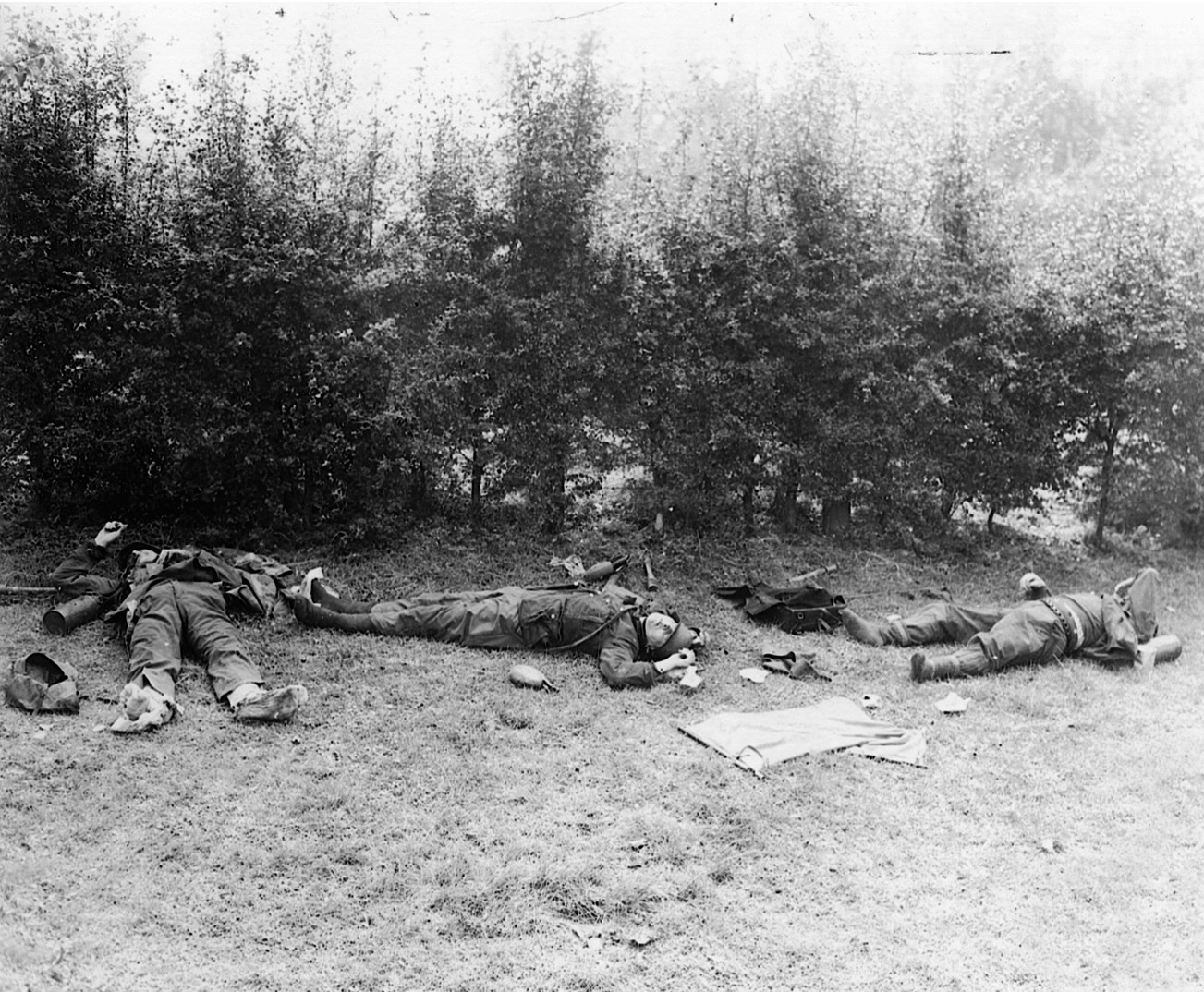
The movements of the enemy seemed surreal to me. When they rose up, their reaction seemed to be so slow. When they turned to look over their shoulders at the sound of my firing, it was in slow motion, and when they started to raise their rifles to fire, they seemed so lethargic. I cannot give you a reason for this mental trance that I was in other than to say that everybody around me seemed out of synchronization. I was the only one who seemed normal. I never experienced anything like this in combat before or since. I immediately emptied the first clip of eight rounds and, still standing in the middle of the road, I put in a second clip. Still shooting from the hip, I emptied that clip into the enemy. By now I could see some of the Germans throwing their rifles to their shoulders to start shooting at me, but they were caught up in the pushing and shoving so they were unable to get a good shot at me. Most of the mob was just running away.
After finishing the second clip, I dropped back to my side of the road for cover. Looking to my right I could see Talbert sprinting to reach the dike. Crouched over, he was still a good ten yards from the road. Right behind him was Sergeant Rader running straight up with that long stride of his. My column was still struggling to reach the road. Tripping over the wire, they were at least twenty yards away. Lieutenant Peacock was leading his column, but he was also about twenty yards from the road.
We Have a Duck Shoot at the Retreating Germans
Not waiting for the remainder of the platoon, I inserted a third clip and started popping up, taking a shot or two, and then dropping back down. The Germans, in the meantime, began running as best they could, but those long winter overcoats and packs shortened their strides as they ran away from me along the foot of the dike toward the east. By now, Talbert, Rader and his crew were in position and they immediately commenced a deadly accurate fire. “Fire at will,” I commanded. You could not have written a better script than this. Talbert’s and Rader’s squads had a duck shoot straight into the rear of that mass of retreating men. It was virtually impossible to miss. Without effective leadership to calm them down and to make this battle organized chaos, the enemy’s retreat disintegrated into a rout.
At this time, another German company arrived from about 100 yards away, east of the road crossing. They had been in the vicinity of the windmill adjacent to the river. When they joined the company that we had routed, the increased mass of troops produced a target-rich environment. My column by now had reached the road and PFC Roy W. Cobb placed his machine gun and delivered long-distance fire on the retreating Germans. Cobb was a hard-nosed individual if you ever saw one, a regular army man who clearly understood combat. Cobb’s fire was extremely effective, as was the fire of Talbert’s squad, since Talbert had a straight shot at a distance of 250 yards. Peacock’s group, on my left, now engaged the enemy, inflicting six dead and nine prisoners on the retreating Germans. As the enemy fled along the dike to the roadway leading back to the river, we could observe their withdrawal at all times. I now called artillery support and we maintained effective fire on the Germans as they ran as fast as they could toward the river.
A Confrontation with Liebgott Over Prisoners
My immediate intention was to pursue them toward the river and cut off their retreat. I requested an additional platoon from battalion, and they ordered a platoon from Fox Company to come to my support. While waiting for the platoon to arrive, we reorganized. My casualties were one man dead and four wounded. Tech/5 Joseph D. Liebgott had been slightly wounded in the arm, but he was ambulatory so I assigned him the mission of escorting seven German prisoners to the rear. Liebgott had earned the reputation of being one of Easy’s best combat soldiers, but we had all heard stories that he was very rough on prisoners. Liebgott was one of Easy Company’s killers, so I deemed it appropriate to take a bit of caution. When he heard me say, “Take the prisoners back to the battalion command post,” he replied, “Oh boy! I’ll take care of them.” In his exuberance Liebgott stood up and paced back and forth and he was obviously very nervous and concerned.
I stopped him in his tracks. “There are seven prisoners and I want seven prisoners turned over to battalion.”
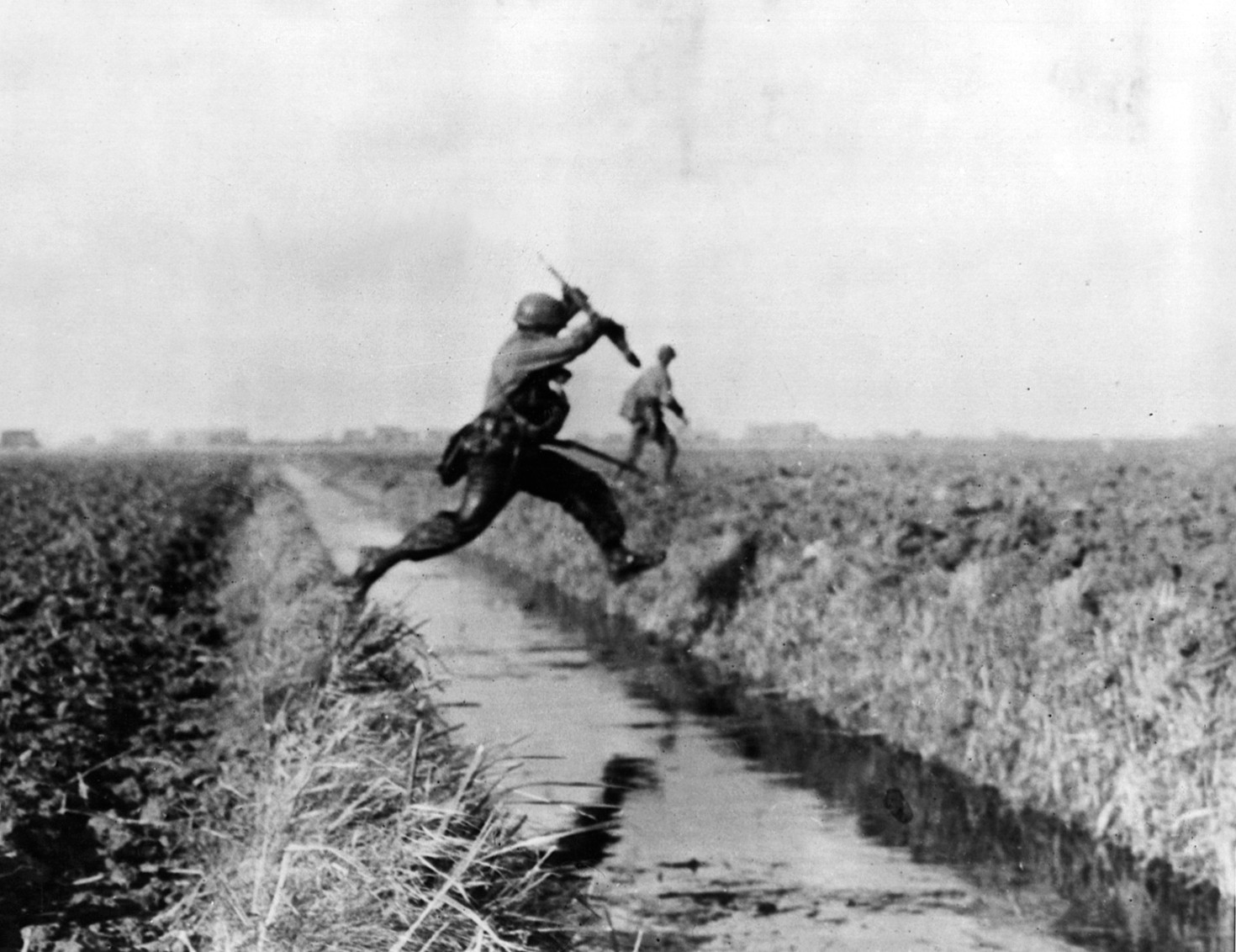
Liebgott was highly incensed and started to throw a tantrum. Somewhat unsure of how he would react, I then dropped my M-1 to my hip, threw off the safety, and said, “Liebgott, drop all your ammunition and empty your rifle.” There was much grumbling and swearing, but he did as I had ordered. “Now,” I said, “you can put one round in your rifle. If you drop a prisoner, the rest will jump you.” One of the German prisoners, an officer, evidently understood this exchange. After he understood my orders, he relaxed and sat down. Liebgott returned seven prisoners to battalion headquarters that day—I personally checked with Nixon.
We Get Pummeled at the Crossroads
When the platoon from Fox Company finally arrived, I distributed ammunition and then made plans to advance toward the river. I intended to set up a base of fire, and then move half the unit forward 100 yards, stop and set up another base of fire, and then have the second half of the platoon leapfrog 100 yards. We would again establish a base of fire and repeat the maneuver in this manner to the river, a distance of 600 yards. At the river end of this road was a ferry that connected the village of Renkun on the north side of the Rhine with a factory on the Rhine River’s south bank. Obviously, the Germans had used this crossing to get these two companies to the Island from Arnhem. Now they wanted to return to the ferry to withdraw across the river.
We conducted four leapfrog movements with little trouble other than receiving a light concentration of artillery fire, which fell harmlessly on our left flank. As we reached the factory buildings, we were hit by an attack on our right rear flank by a force that I estimated at seventy-five men. Looking at my tactical position from the factory, I realized that I was getting myself into a bottleneck. By now, Easy Company was really close to the river and we were looking up at the German artillery and mortar positions. And now, on my right rear flank, I had what was left of those two German companies pinching in on my flank and attempting to cut off the withdrawal of my two platoons. I decided it was better to call it a day, withdraw, and live to fight tomorrow. Consequently, we withdrew to the dike, leapfrogging in reverse, but always laying down a base of fire.
All went as planned, but just as we were pulling the last groups over the dike, the enemy cut loose with a terrific concentration of mortar and artillery fire right on that crossroads. They had that point zeroed in just perfectly. Before we could move the troops either right or left away from the crossroads, we suffered eighteen casualties, all wounded. I grabbed the SCR 300 radio and went to the top of the dike to try and return some artillery on the Germans. I put the radio down by my left shoulder and was coordinating artillery fire as rapidly as I could. I also called battalion and asked for medics and ambulances to extract the wounded. Lieutenant Jackson “Doc” Neavles, the assistant battalion surgeon, replied and wanted to know how many casualties. I told him we needed help for “two baseball teams.” Neavles wasn’t very sharp where sports were concerned, and asked me to put that message in clear language. I replied, “Get the hell off the radio so I can get some more artillery support, or we’ll need enough for three baseball teams.”
About that time a concentration of mortar rounds hit right behind me and I heard a “ting.” I took off my helmet to examine it, thinking I’d been hit on the helmet. There was no sign of damage, so I put it back on and then I noticed that the antenna to the radio sitting by my left shoulder had been clipped off right at the top of the radio. Eventually, the artillery and mortar fire ceased, but we had suffered far too many casualties to continue the engagement. Fortunately none was killed in weathering that mortar and artillery concentration. Sergeant Leo Boyle was one of those hit. He had been my right-hand man all day, and he was in a foxhole right behind me when he was hit. That was the end of the war for Boyle, a very good, loyal friend. The ambulances came and picked up the wounded. I set up a couple of strong points to cover the crossroad, but did not put one on the crossroad since the Germans had already used the intersection as a target reference point. About this time Captain Nixon showed up and asked me, “How’s everything going?”
“Give me a drink of water,” I replied as I sat down on the edge of the dike. Until that point, I had not realized how exhausted I was. He handed me his canteen and as I went to lift the canteen, my hand was visibly shaking. I’d often seen Nixon’s hand shake when he had one too many drinks, but this was the first time that I had ever seen my own hand shake. Nixon’s shaking hands were the result of guzzling a shot of Vat 69 and were due to the shock of his nervous system gearing up. I felt my shaking hands were the result of my nervous system settling down, recovering from exertion and excitement.
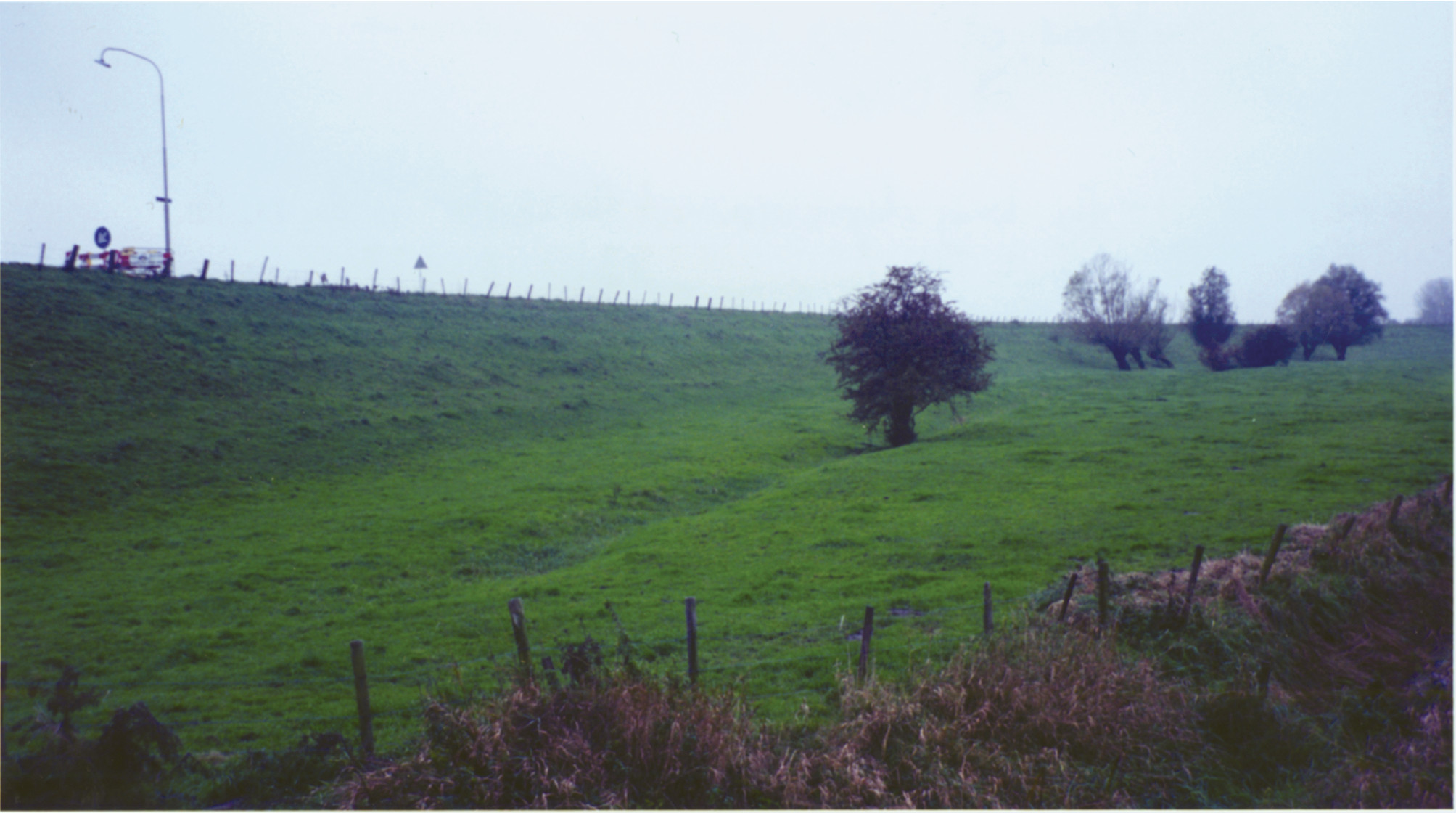
German Mistakes; E Company Valor
How we had survived, I had no idea. We were certainly very lucky, as we had probably faced 300 plus troops. Fortunately the German leadership was abysmal. This was a far cry from what we had experienced in Normandy, where the enemy marksmanship and grazing fire inflicted a far greater number of casualties on Easy Company. At no time during our current battle had there been any evidence of German commanders directing well-aimed and concentrated fire until their artillery had opened up as we reached the river. This lack of fire discipline was seen originally by the indiscriminate firing of the machine guns early in the morning. Once we had eliminated the enemy machine gun crew, the Germans magnified their mistakes by letting our initial squad get away with sitting in that open field, waiting for the balance of the platoon and the machine gun section to come forward from the company CP. While we waited, we were located in a shallow trench—they had a road bank for a firing line. We sat there for at least one hour without the enemy exercising the slightest bit of initiative. Additionally, the German officers allowed their company to bunch up in one gigantic mass once the battle started. Finally, the Germans compounded their errors by permitting us to pin them down with two machine guns while the remainder of 1st Platoon made a dash across 200 yards of a perfectly flat field. To allow roughly thirty-five men rout two companies of elite troops hardly spoke well of the leadership of the enemy.
In my estimation, this action by E Company was the highlight of all Easy Company’s engagements during the entire war and it also served as my apogee as company commander. Easy’s destruction of the German artillery battery at Brecourt Manor on D-Day was extremely important in its contribution to the successful landing at Utah Beach, but this action demonstrated Easy Company’s overall superiority, of every man, of every phase of infantry tactics: patrol, defense, attack under a base of fire, withdrawal, and, above all, superior marksmanship with rifles, machine guns, and mortar fire. All this was done against numerically superior forces that had an advantage of ten to one in manpower and excellent observation for artillery and mortar support. Since early morning, we had sustained twenty-two casualties from the fifty-five or so soldiers who were engaged. Nixon and I estimated the enemy casualties as fifty killed, eleven captured, and countless wounded. I guess I had contributed my share, but killing never made me happy. Satisfied, yes, because I knew I had done my job; but never happy.
There was no superior officer or staff officer present to witness any part of the engagement. Therefore, it was up to me to write up the account. Describing this action, I intentionally wrote the entire narrative without once using the word “I.” My reason was simple—I wanted to ensure that all credit went to the men who deserved it. I was not bucking for a personal decoration or any personal acknowledgement of my abilities as a combat commander.
On October 16, I recommended that 1st Platoon and the first section of the light machine gun platoon of Headquarters Company be cited for gallantry in action. In compiling my recommendation, I noted that 1st Platoon had spearheaded the company attack at Carentan. In Holland they had led the attack on Nuenen during which fifteen men of the platoon were killed or injured. Now they had been instrumental in the destruction of two companies of SS troops. God, I was proud of these men! Eleven days later, Colonel Sink issued a regimental general order that cited 1st Platoon, Easy Company for “their daring and aggressive spirit and sound tactical ability” against a vastly superior enemy force. That citation was reward enough for me.
My real satisfaction lay in the eyes of the men. In a sense, Staff Sergeant Talbert was representative of the entire company. From that day onward, there was a look in his eye of respect, and a look in my eye of respect for him and the others who had participated in the attack. The key to a successful combat leader is to earn respect, not because of rank, but because you are a man. In a letter dated after the war, Tab attempted to summarize our relationship: “The things we had are damn near sacred to me.” The feeling was mutual as October 5 sealed feelings of camaraderie and friendship that were beyond words. You can’t describe it. You have to live through it, but you never question it.
I Leave Easy Company and a Band of Brothers
October 5 marked my last combat action as commander of Easy Company and the last day that I fired my weapon in combat. On October 9, Colonel Sink assigned me to 2d Battalion headquarters to serve as battalion executive officer. The episode in the HBO series that depicted Sink visiting Easy Company on the dike after we had destroyed the two German companies to ask if I thought I could handle a battalion was fairly accurate, but the timing was wrong. This conversation actually occurred while we were at Mourmelon-le-Grand after we were pulled off the front line in November. First Lieutenant Fred Heyliger temporarily assumed command of Easy Company until First Lieutenant Norman S. Dike, Jr. arrived from regimental headquarters to assume command of the company with which I had served for two years. Heyliger had been an 81mm mortar platoon leader in Headquarters Company of 2d Battalion. He had two combat jumps to his credit and was well respected in Easy Company.
Leaving Easy Company was the hardest thing I had done in my life. Life in an infantry company is extremely intimate and the result is that men share their collective experiences each and every day. As I reflected on my two years in the company, from a platoon leader at Toccoa to Easy’s commanding officer since D-Day, I knew that I was leaving the greatest group of men with whom I had ever served. From the tyrannical tenure of Captain Sobel through my relief, Easy Company had trained and fought as a cohesive unit. At Toccoa, Sobel had constantly screamed at the men and he forced each soldier to stand on his own. You were not supposed to help one another. If you did, Sobel withheld your pass and placed you on extra duty. He was trying to wash the men out. This brought the men closer together as they helped each other with their sprains, in carrying heavy equipment, such as crew-served weapons, mortars, and base plates. Easy Company had to work together to get through each day, and this cohesion intensified as the weeks passed. In time, I noticed that when the men started receiving packages from home, they shared within their squad and within their platoon.
When we deployed to England in 1943 the cooperation manifested itself even more when the noncommissioned officers mutinied because of their fear of going into battle with Captain Sobel. The rebellion was based on true fear of what lay ahead. Fortunately, Colonel Sink had intervened to diffuse a highly dangerous situation. And later, of course, when we entered combat, the men continued to share the good and the bad, the tough times and the easy times. From D-Day onward, combat further cemented the closeness that united Easy Company. Stress and combat created a special bond that only exists in an infantry company at war. Hardship and death brought the men together as close as any family or any husband and wife. It was this bond that made Easy Company “a band of brothers” that exists to this day. I was fortunate enough to have been a part of it, but the cohesion that existed in the company was hardly the result of my leadership. The company belonged to the men—the officers were merely the caretakers.
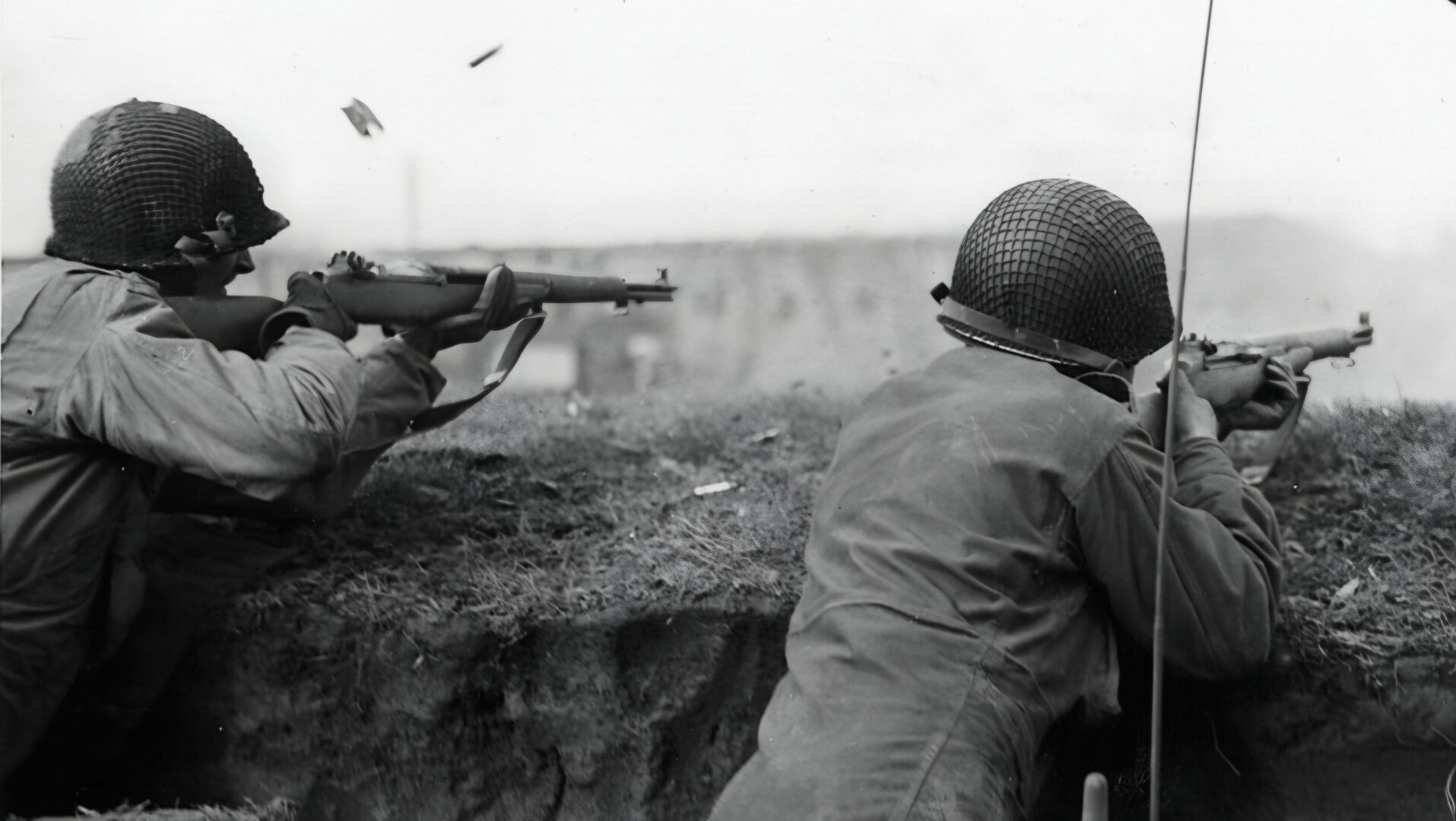
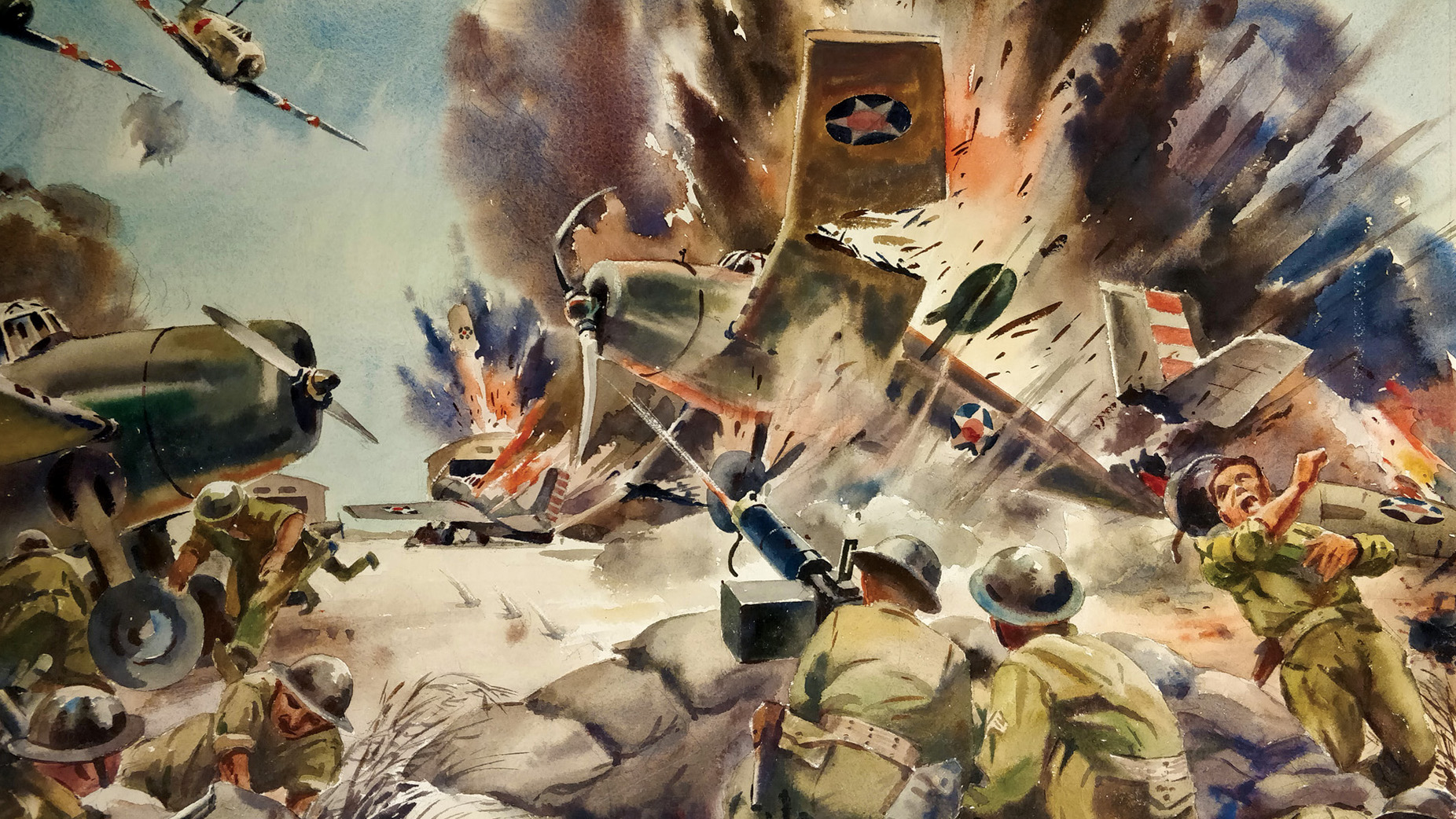
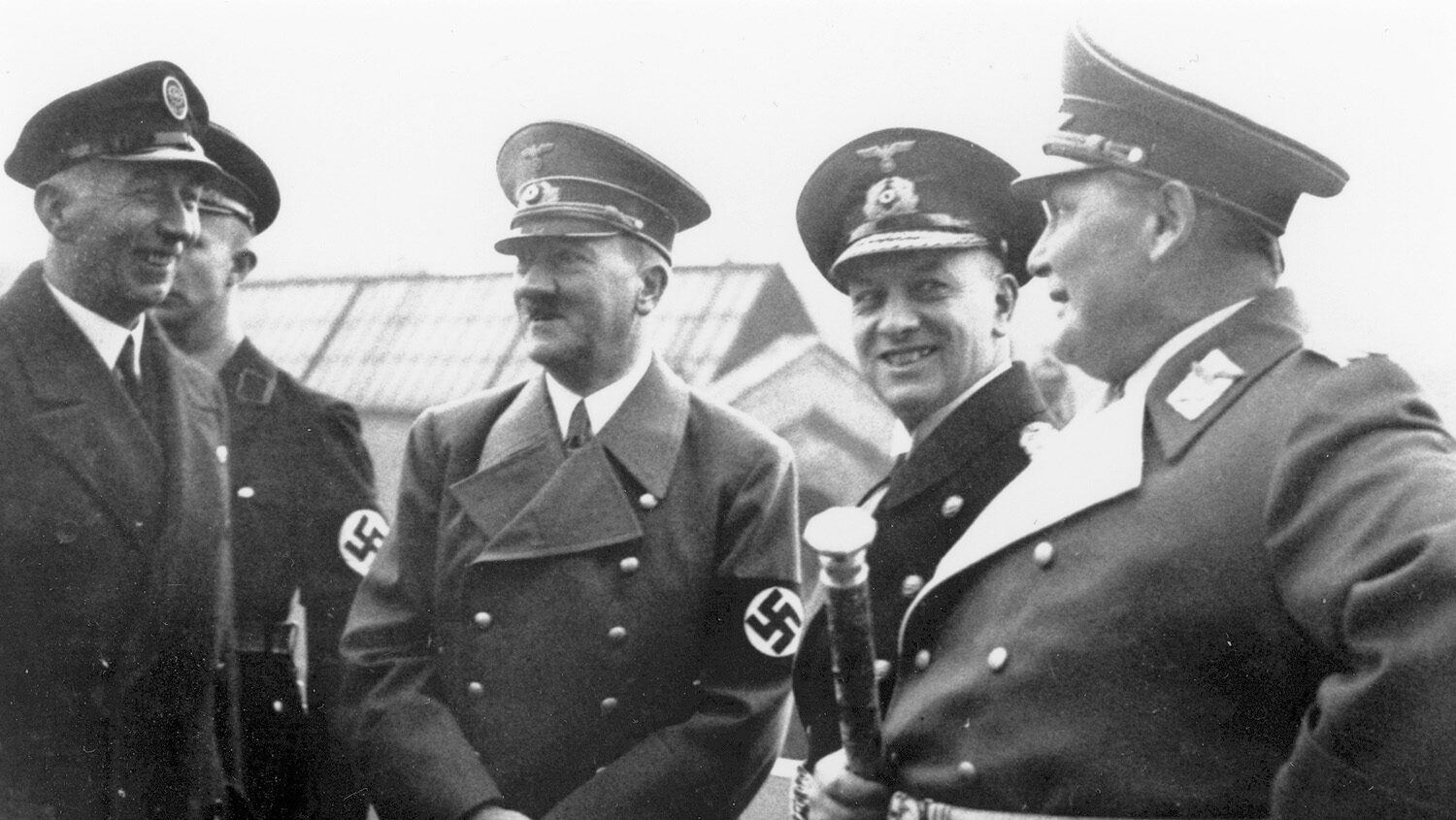
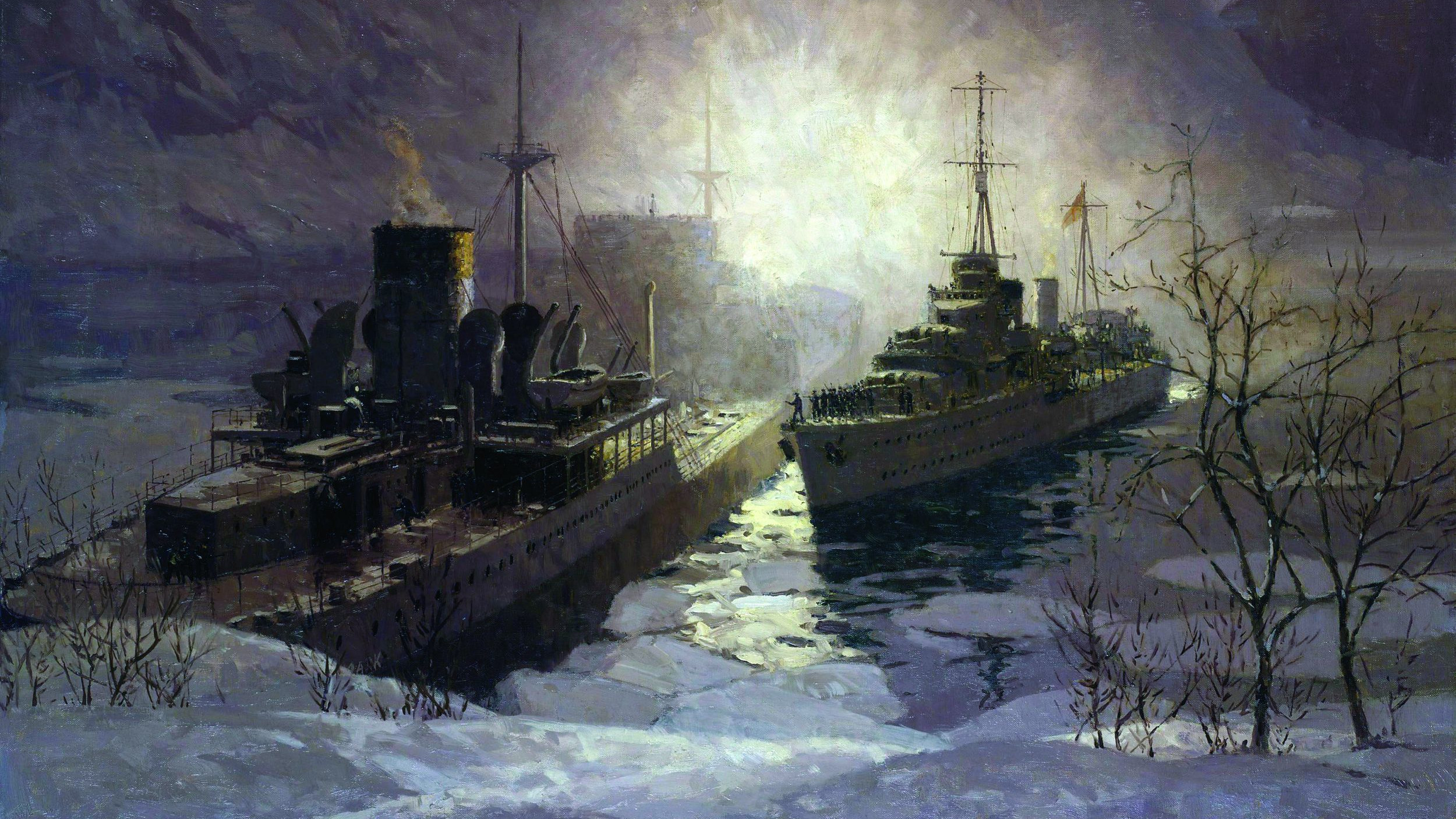
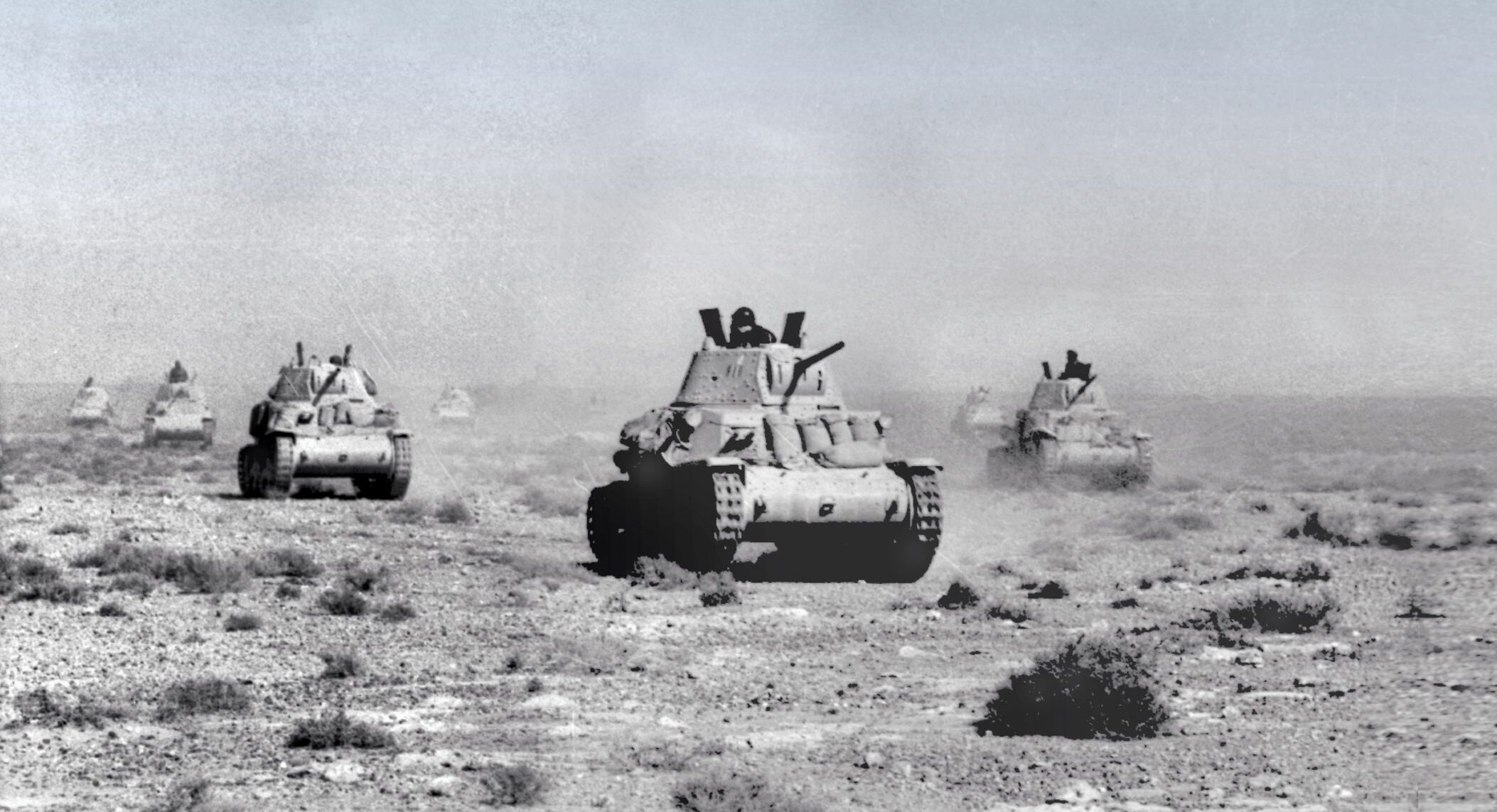
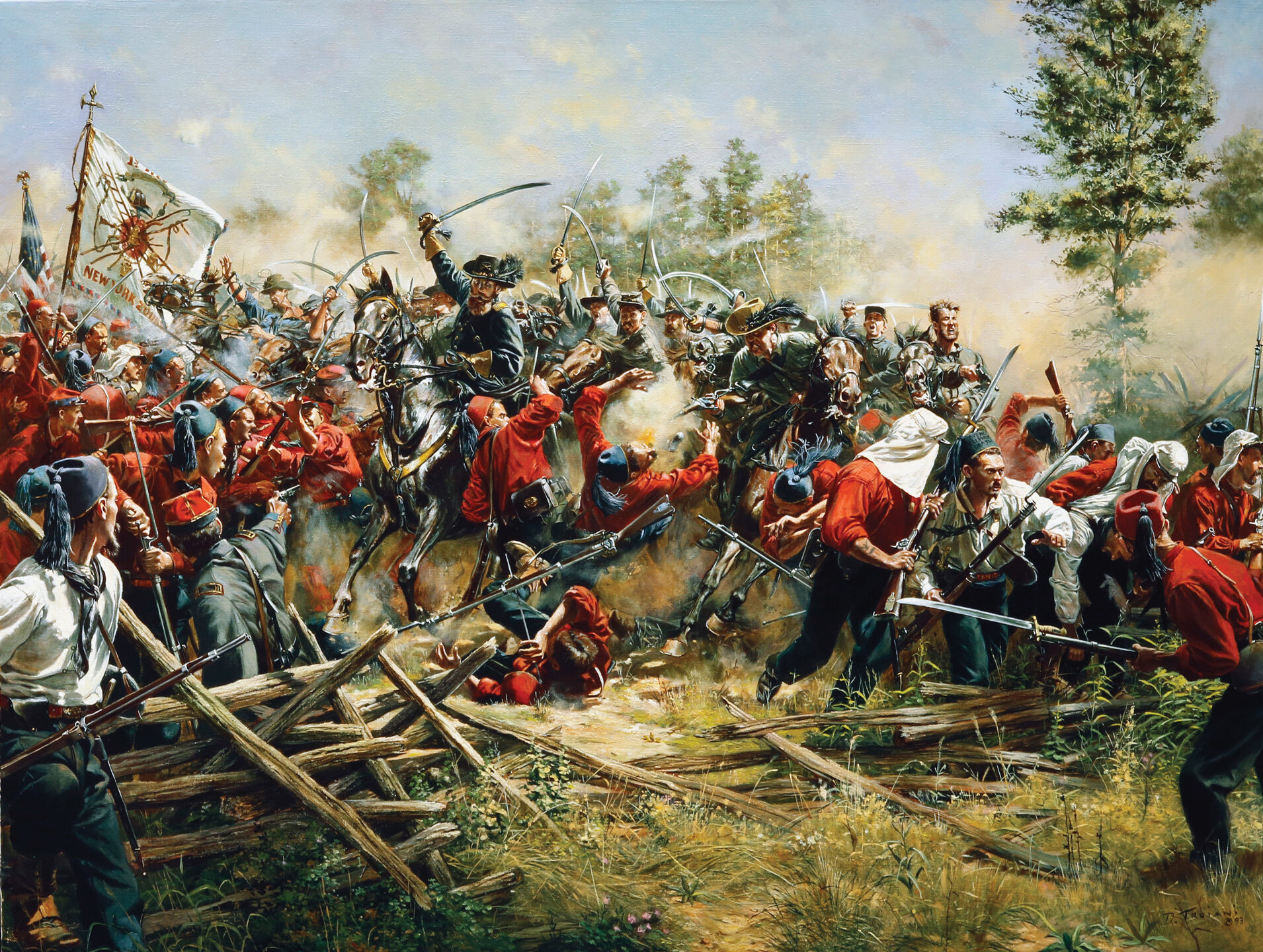
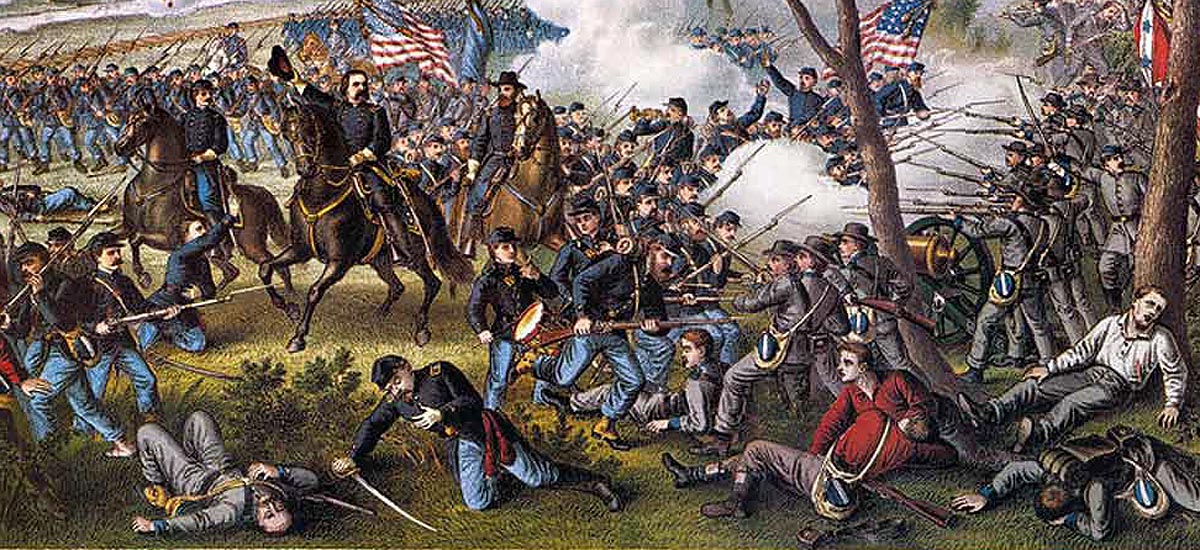
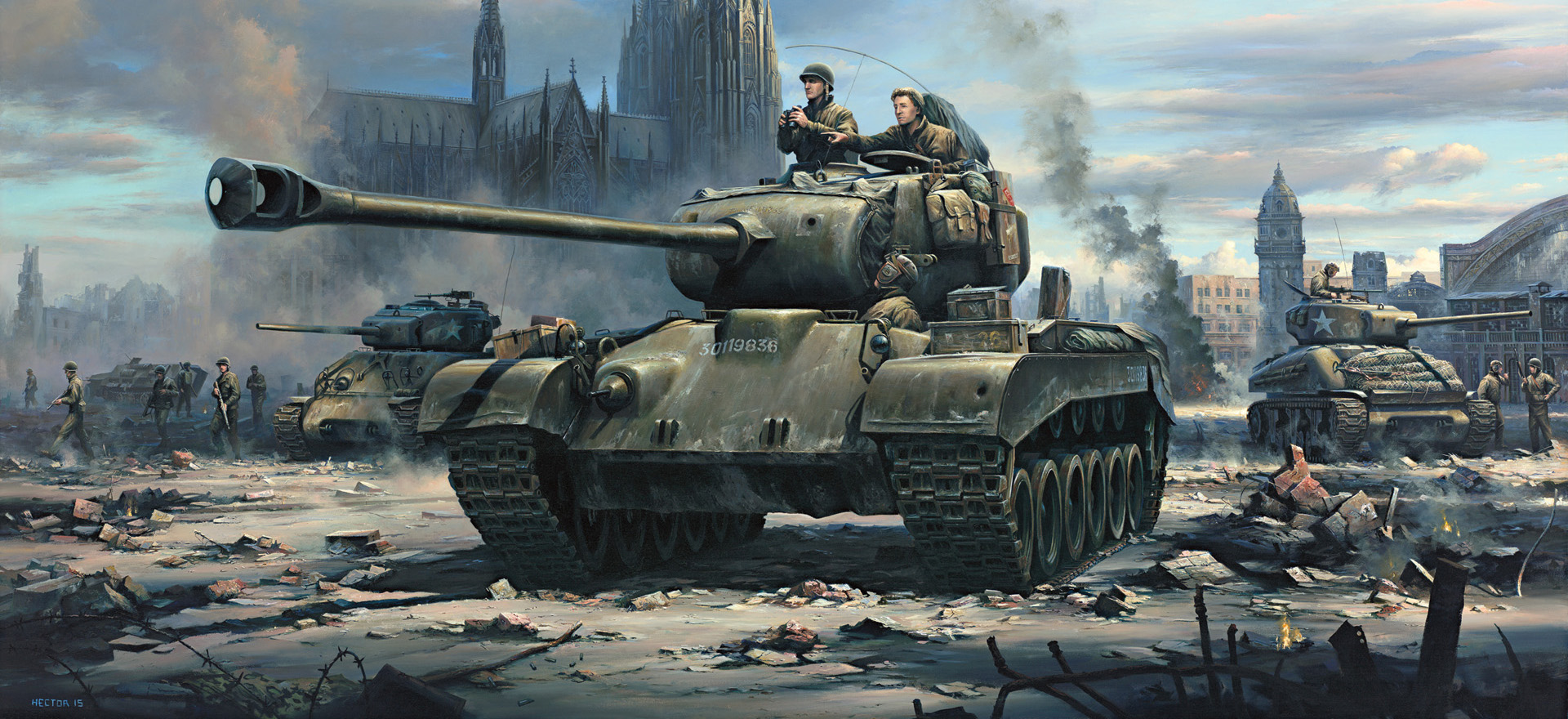
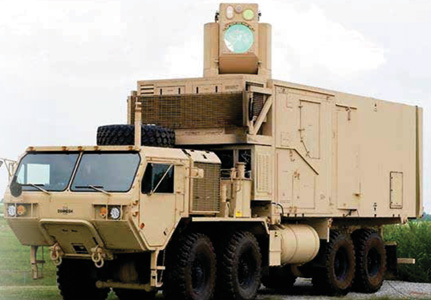
Wow. Just an amazing study in leadership, courage, character.
Dick Winters, an awesome man, I lived within a mile or two of him and to my loss never got to meet him.